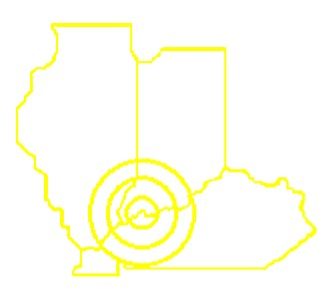Read at the February meeting of the Tri-State Genealogical Society, 12 February 2019 by Peggy Newton
Many of you may know that on July 1st of 2018, Indiana increased chances for obtaining identifying adoption information for those adopted before January 1, 1993. It wasn’t an automatic unlocking of all adoption records. The biological parent can still restrict access by filing a Birth Parent Contact Preference Form.
But let’s say the birth parent did not file the contact preference form, for whatever reason. Maybe they’ve passed away. What this means for the adopted child who is 21 or older is that he or she—the adoptee—can receive identifying adoption information by completing both the identifying and non-identifying forms and submitting them to the Adoption Matching Registry at the Indiana State Health Department. The applicant will need to include a government-issued ID, such as a driver’s license or passport or Department of Corrections ID with the applications. The cost is free, but there might be a waiting period of five months or longer to process the request, depending on how many requests are received by the Adoption Matching Registry office.
The birth parent or adopting parent can receive identifying information if both birth parent and adoptee are registered with the Adoption Matching Registry. The birth parent must be 18 years of age or older to register.
Individuals eligible to register include an adult adoptee; adoptive parent; birth parents; and birth siblings. Spouses and relatives of the deceased adoptee or deceased birth parent may register with appropriate proof of relationship.
Keep in mind that this applies to the State of Indiana. Adoption laws vary from state to state.
Once you have received the names of birth parents or adopted child, you would search for additional information the same way you’d search for anyone in your family. Start with what you know, the names of the people involved in the adoption such as family members, judges, lawyers and agencies. If possible, you would want to interview as many people as you can and gather papers, documents, and photos. Keep a record of your information as you receive it, and cite your sources so you can eliminate searching the same source again. This will also help you evaluate any conflicting information.
Consult current and past city directories, phone books, and directories of associations to obtain names and addresses of hospitals, adoption agencies, social service agencies, newspapers, orphans’ homes and even homes for “wayward” girls.
To find the last location of a deceased person, the Social Security Index may be useful. Along the same lines, you might find someone in obituaries and cemetery records or online listings.
Courthouse records such as guardianships, probates, and marriages may yield important information; also amended or delayed birth records.
Don’t overlook neighbors, especially those who have lived in the same place for a number of years.
Thanks to the new law that’s not quite a year old, searching for an adoptee or birth parent has become a little easier in Indiana.
Sources
“Adoption Matching Registry.” Vital Statistics, State of Indiana. https://www.in.gov/isdh/27862.htm . Retrieved 24 January 2019.
“Adoption—General Resources.” Cyndi’s List. https://www.cyndislist.com . Retrieved 24 January 2019. (This link will take you to the home page of Cyndi’s List. In the search box on the upper right of that page, type adoption.)
Kimberly Powell. “Adoption Search—How to Find Your Birth Family.” https://www.thoughtco.com/how-to-find-your-birth-family-1420433. Updated 17 March 2017. Retrieved 24 January 2019.

